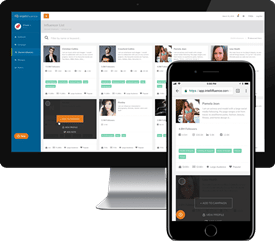In the ever-evolving landscape of advertising, businesses continuously seek the most effective methods to reach their target audiences. Traditionally, this meant investing heavily in billboards, magazine spreads, and television commercials—domains ruled by the large firms on Madison Avenue. However, the past 10-15 years have witnessed a significant shift with the rise of influencer marketing, a strategy that leverages the power of word-of-mouth through individuals with substantial online followings. This article explores the history of both traditional forms of advertising and influencer marketing, compares their effectiveness, and discusses how brands can harness the internet’s potential to build brand awareness and boost sales.
The Golden Age of Traditional Marketing
For decades, traditional marketing was the cornerstone of advertising strategies. Large advertising agencies, particularly those based on Madison Avenue in New York City, dominated the industry. These firms created captivating campaigns for billboards, magazines, and television ads, reaching millions of consumers worldwide.
Billboards offered high visibility in strategic locations, capturing the attention of commuters and pedestrians alike. Magazines provided a platform for glossy, eye-catching advertisements that aligned with the publication’s niche audience. Television commercials became a staple in households, with brands vying for prime-time slots to showcase their products to a broad audience. These traditional forms of advertising were effective in their time, creating memorable campaigns that are still referenced today.
The Rise of Influencer Marketing
As the internet became more accessible and social media platforms emerged, a new form of marketing began to take shape. Influencer marketing, rooted in the age-old concept of word-of-mouth promotion, started gaining prominence. Over the last 10-15 years, individuals who amassed significant followings on platforms like Instagram, YouTube, and Twitter became valuable assets for brands looking to connect with consumers on a more personal level. By using Intellifluence as a brand, you gain access to a database of over 250,000 influencers for collaboration.
The rise of influencers can be attributed to the growing distrust of traditional advertising and the desire for authenticity. Consumers began to rely on recommendations from people they trust, even if that trust was built through online interactions. Influencers, by sharing their genuine experiences and opinions, could sway their followers’ purchasing decisions more effectively than traditional advertisements.
Influencer Marketing Versus Traditional Marketing
When comparing influencer marketing to traditional marketing, several key differences emerge. Traditional marketing casts a wide net, aiming to reach as many people as possible regardless of their specific interests. This approach can lead to significant waste in advertising spend, as not all viewers are potential customers.
In contrast, influencer marketing allows brands to target specific demographics aligned with the influencer’s audience. This targeted approach often results in higher engagement rates and better conversion metrics. Additionally, influencer marketing tends to be more cost-effective, especially for small to medium-sized businesses that may not afford expensive television spots or large-scale billboard campaigns.

Featured Influencer: Jasmine Quirple
Hey I’m Jasmine a twenty-something first time mom to Savannah Lynn living in Philadelphia, Pa and sharing my motherhood journey as an Instagram Influencer! I started Welcoming Savannah as a way to meet and connect with fellow moms on Instagram. Next thing I know it turned into a passion and it is now growing by the day. I love sharing my day to day motherhood journey along with fashion, food ideas, toddler activities, travel and adventures.
Benefits of Influencer Marketing Over Legacy Advertising
- Authenticity and Trust: Influencers build relationships with their followers based on trust and authenticity. When an influencer endorses a product, it comes across as a genuine recommendation rather than a sales pitch, increasing the likelihood of consumer engagement.
- Targeted Audience: Brands can choose influencers whose followers match their target market. This precision ensures that marketing efforts are directed toward individuals more likely to be interested in the product or service.
- Cost-Effectiveness: Influencer marketing campaigns can be scaled to fit various budgets. Micro-influencers, those with smaller but highly engaged followings, offer affordable options for brands while still delivering impressive results.
- Higher Engagement Rates: Influencer content often receives higher engagement than traditional ads. Likes, comments, shares, and views provide measurable metrics that can be tracked and analyzed for effectiveness.
- Adaptability and Speed: Influencer campaigns can be executed quickly and adjusted on the fly based on real-time feedback, a flexibility that traditional advertising methods lack.
Harnessing the Power of the Internet and Influencers
To leverage influencer marketing effectively, brands should consider the following strategies:
- Identify the Right Influencers: Research and select influencers whose values align with the brand and who have an audience that matches the target demographic. Brands can filter the Intellifluence database based on the specialties of their products. This feature saves time when searching for influencers, as influencers specify the types of products they are interested in reviewing during their registration on Intellifluence. The products that influencers wish to review typically align with what their audience is interested in learning about.
- Build Authentic Partnerships: Engage influencers in a way that allows for creative freedom. Authentic content resonates more with audiences and enhances credibility.
- Set Clear Objectives: Define what the brand aims to achieve with the campaign—be it brand awareness, lead generation, or sales—and communicate these goals to the influencer.
- Track and Measure Results: Utilize analytics tools to monitor the performance of influencer campaigns. Metrics such as engagement rates, website traffic, and conversion rates provide insights into the campaign’s success.
- Stay Compliant: Ensure that all influencer partnerships comply with advertising regulations, including proper disclosure of sponsored content.
The Future of Advertising: A Hybrid Approach
While influencer marketing offers numerous advantages, traditional marketing is not obsolete. Brands often find the most success with a hybrid approach that combines the broad reach of traditional advertising with the targeted precision of influencer marketing.
Television ads and billboards still play a role in building brand recognition on a large scale. However, integrating influencer marketing can amplify these efforts by fostering deeper connections with consumers. For instance, a brand may launch a national advertising campaign while simultaneously partnering with influencers to promote the same message on social media platforms.
The shift from traditional forms of advertising to influencer marketing represents a significant evolution in how brands connect with consumers. Influencer marketing, rooted in the power of word-of-mouth and bolstered by the reach of the internet, offers a more personalized and effective approach to advertising. By understanding the strengths of both traditional and influencer marketing, brands can develop comprehensive strategies that maximize their impact in the marketplace.
In this rapidly changing digital landscape, staying adaptable and embracing new marketing methods is crucial for success. Influencer marketing is not just a trend but a testament to the changing preferences of consumers who value authenticity and personal connection. As brands continue to navigate this shift, those who effectively harness the power of influencers will likely see increased brand awareness and, ultimately, a boost in sales.

SallyBot is committed to helping users get the most out of Intellifluence. By helping brands create campaigns, providing unparalleled customer service and offering useful advice, nothing makes SallyBot happier than hearing she is liked… Really, really liked.






